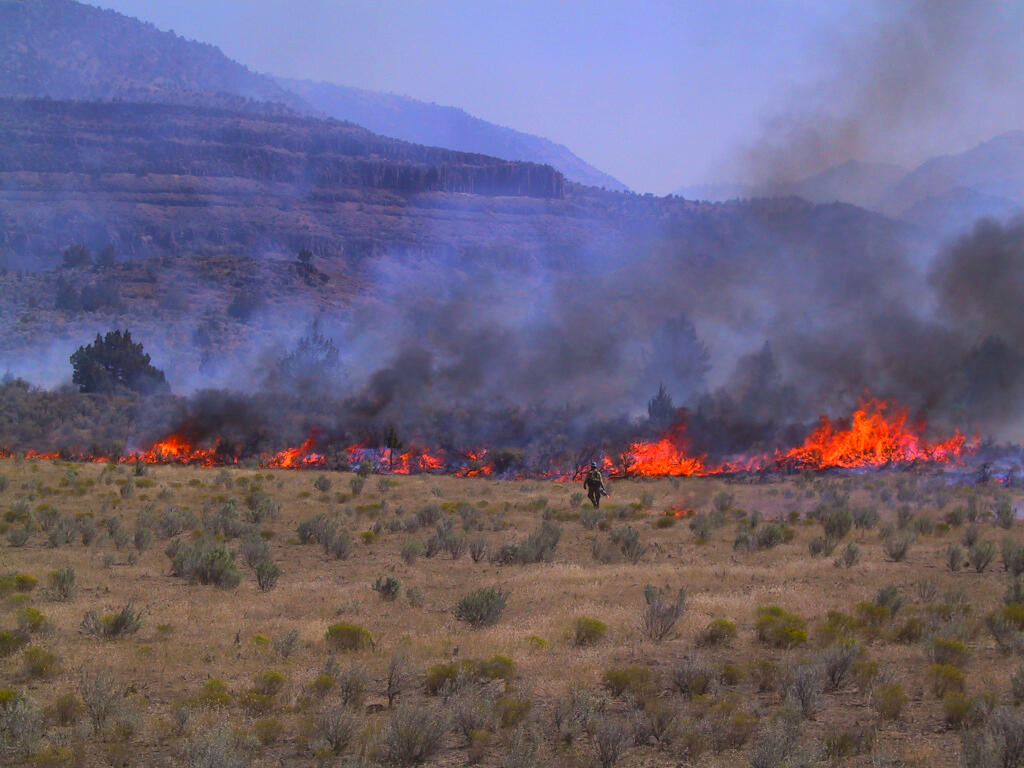New study on the economics of public land treatments reveals treatment characteristics influence costs
Limited information exists on the costs of public land treatments, such as controlling flammable weeds and conducting prescribed burns, but managers can pair cost information with effectiveness data to improve decision making. In a new study, researchers used data from the BLM/USGS Land Treatment Digital Library to develop land treatment cost estimates.
Western public lands face numerous threats, including increasing wildfire frequency and severity, drought, and the spread of invasive species. Public land managers are often tasked with implementing effective habitat restoration and rehabilitation treatments to aid ecosystem recovery and protect neighboring communities. However, potential land treatments — such as seeding, prescribed burning, weed control, and others pictured below — vary widely in their cost and efficacy, making it difficult for managers to decide which actions to take.








With limited budgets, one aspect all public land managers consider in their decision making is the cost of a particular treatment or restoration action. In this study, researchers aimed to summarize patterns in land treatment costs to assist managers in making cost-effective decisions for their management area. Analysis of 70 years (1950–2020) of land treatment cost data from over 1700 records in the Land Treatment Digital Library (LTDL), a repository of Bureau of Land Management (BLM) legacy land treatment information, yielded the following major insights:
Costs varied across land treatment methods
Aerial seeding — a technique for planting seeds across a wide area by dropping them from an aircraft — cost less per acre than the other analyzed treatment types. Treatments that cost more per acre tended to rely more on expensive equipment and intensive labor. That said, costs might also increase with treatment quality or intensity, which were not observed in this study. Important next steps will be to combine the treatment cost data from this study with other data on treatment efficacy to help managers weigh the pros and cons of different treatment types for a management area.
Larger land treatments cost less per acre than smaller land treatments
This pattern may reflect a difference in treatment methods used at smaller and larger scales, or it may reflect theoretical predictions that fixed treatment costs (for example, equipment purchases) decrease per acre as treatment area increases.
Some treatments cost more depending on the location of treatment
For example, costs per acre for drill seeding, prescribed burning, and soil stabilization all increased as average slope of a treated area increased. In addition, seedling planting and soil stabilization cost more per acre when treatments were closer to a road, while the costs of other treatments were not influenced by proximity to roads.
These are just a few of the broader patterns revealed in this study. Other variables analyzed include year of treatment, seed costs, and additional spatial and location characteristics of treatments. In total, this cost analysis can assist managers in estimating land treatment costs across many different contexts.
Learn more through the links below.



